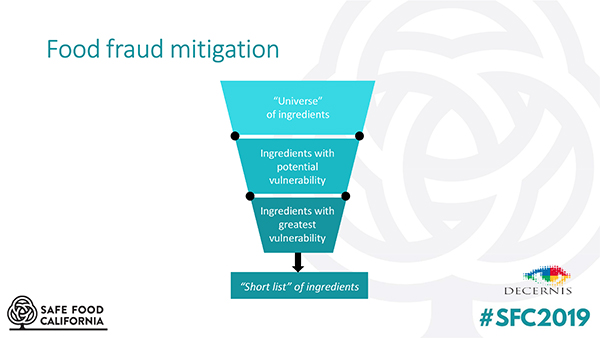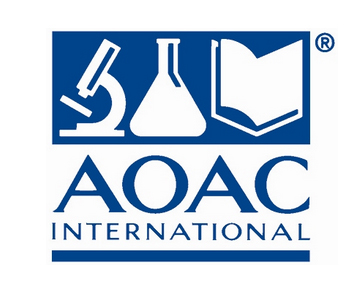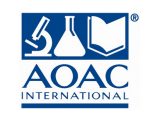I attended the Safe Food California Conference last week in Monterey, California. Food fraud was not the main focus of the conference, but there was some good food fraud-related content. Craig Wilson gave a plenary session about the past, present and future of food safety at Costco. As part of that presentation, he discussed their supplier ingredient program. This program was implemented in response to the 2008 Salmonella Typhimurium outbreak in peanut paste but has direct applicability to food fraud prevention.
Food Fraud: Problem Solved? Learn more at the 2019 Food Safety Supply Chain Conference | May 29–30, 2019 | Attend in Rockville, MD or virtually Jeanette Litschewski from SQFI gave a breakout presentation on the most common SQF non-conformities in 2018. She presented data from 7,710 closed audits that cited 44,439 non-conformities. Of those, 756 were related to food fraud requirements. While this presentation was not focused on the specifics of the food fraud non-conformities, Jeanette did mention that many of them were related to broad issues such as not having completed a food fraud vulnerability assessment or appropriately documenting that each of the required factors was addressed in an assessment.
I was invited to give a breakout presentation with an overview of food fraud issues globally and a brief outline of some of the tools currently available to assist with conducting vulnerability assessments. Although many of the attendees had already began implementation of food fraud measures, there was a lot of interest in this list of tools and resources. Therefore, I am recreating the list in Table I. The focus is on resources that are either complimentary or affordable for small- and medium-sized businesses, with recognition that “full-service” and tailored consulting services are always an option.
| Food Fraud Resources (Table I) | ||
| Food Fraud Mitigation Training | Food Fraud Vulnerability Assessments | Food Fraud Data/Records |
| Michigan State Massive Open Online Courses for Food Fraud | SSAFE/PwC | Decernis Food Fraud Database |
| Food Fraud Advisors Online Training Courses | USP FFMG | FPDI Food Adulteration Incidents Registry |
| Food Fraud Advisors Vulnerability Assessment Tools (downloadable spreadsheets): | ||
The USP Food Fraud Mitigation Guidance referenced in Table I is a great source of general information on food fraud mitigation, as is the “Food Fraud Prevention” document created by Nestle. Many of the GFSI Certification Programme Owners have also released guidance documents about vulnerability assessments, such as BRC, FSSC 22000, and SQF.
The Decernis Food Fraud Database and the FPDI Food Adulteration Incidents Registry (see Table I) are two sources of historical food fraud data that are referenced specifically in the SSAFE/PwC tool. Companies can also track official information about food safety recalls and alerts (including related to food fraud) from public sources such as the FDA Recalls, Market Withdrawals, & Safety Alerts; Import Refusals; Warning Letters; USDA Recalls and Public Health Alerts; EU RASFF, and many others.
Of course, there are quite a few companies that offer tailored tools, training and consulting services. Companies that offer courses in food fraud mitigation and assistance in creating a vulnerability assessment (or FDA-required food safety plan) include NSF, Eurofins, AIB International, SGS, and The Acheson Group.
Also available are services that compile food safety recalls and alerts (including those resulting from food fraud) from multiple official sources, such as FoodAKAI and HorizonScan. EMAlert is a proprietary tool that merges public information with user judgment to inform food fraud vulnerability. Horizon Scanning is a system that can monitor emerging issues, including food fraud, globally.

In short, there are many resources available to help support your food fraud vulnerability assessments and mitigation plans. If I have unintentionally missed mentioning any resources you have found to be helpful, please let us know in the comments.















